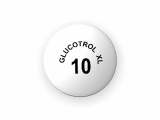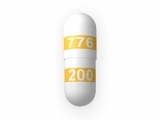Stability guidelines for pharmaceuticals
In the pharmaceutical industry, ensuring the quality and safety of medications is of utmost importance. One key aspect of this is the stability of pharmaceutical products. Stability refers to the ability of a drug to retain its desired quality, efficacy, and safety over time. It is crucial to understand and control the factors that can affect the stability of pharmaceuticals, as any changes in stability can have significant implications for patient health and treatment outcomes.
The International Council for Harmonisation of Technical Requirements for Pharmaceuticals for Human Use (ICH) provides guidelines and standards to ensure the stability of pharmaceutical products. These guidelines outline the testing and evaluation procedures that pharmaceutical manufacturers must follow to demonstrate the stability of their products. The goal is to ensure that medications maintain their quality throughout their shelf life, from production to the point of use.
The stability testing process involves subjecting pharmaceutical products to a range of environmental conditions, such as temperature, humidity, and light, to simulate real-world storage conditions. The samples are then analyzed at various time points to assess their physical and chemical properties, including potency, purity, and degradation products. By monitoring these parameters, pharmaceutical manufacturers can determine the shelf life and storage conditions that will ensure the quality and safety of their products.
Stability testing is an essential part of the drug development process and is required by regulatory authorities worldwide. The results of stability testing are included in the drug registration dossier submitted to regulatory agencies for product approval. These data provide evidence of the pharmaceutical product's quality, safety, and efficacy, and support the establishment of storage and labeling instructions for healthcare professionals and patients.
In summary, stability guidelines and testing play a critical role in ensuring the quality and safety of pharmaceutical products. By following these guidelines, pharmaceutical manufacturers can confidently provide medications that retain their identity, potency, and effectiveness throughout their shelf life. This ultimately provides healthcare professionals and patients with the assurance that the medications they use are of the highest quality and will deliver the intended therapeutic benefit.
Why Stability Guidelines are Important for Pharmaceuticals
Stability guidelines play a crucial role in the pharmaceutical industry by ensuring the quality and safety of drugs.
Pharmaceutical products are subject to various environmental conditions during their lifecycle, including temperature, humidity, and light exposure. These factors can significantly impact the chemical composition and physical properties of medications, leading to changes in potency, efficacy, and shelf life. Therefore, it is essential to establish stability guidelines to monitor and control these potential risks.
Stability guidelines help in:
- Assessing the quality of pharmaceutical products over time
- Determining appropriate storage conditions to maintain product integrity
- Setting expiry dates and retest periods
- Ensuring consistent product performance and patient safety
- Supporting regulatory compliance and product registration
By following stability guidelines, pharmaceutical manufacturers can ensure that drugs are safe, effective, and retain their intended therapeutic properties throughout their shelf life. These guidelines provide scientifically-based recommendations for conducting stability studies, data analysis, and establishing acceptance criteria for different types of pharmaceutical products.
To comply with stability guidelines, pharmaceutical companies must conduct comprehensive stability tests under various conditions, such as long-term stability studies (typically 12-24 months) and accelerated stability studies (usually 3-6 months). The results of these tests help in making informed decisions regarding product formulation, packaging, and storage instructions.
Overall, stability guidelines are crucial tools in the pharmaceutical industry to guarantee the quality, efficacy, and safety of drugs, ensuring that they remain stable and potent from production to patient use.
The Role of Stability Guidelines in Ensuring Quality
Stability guidelines play a crucial role in ensuring the quality of pharmaceutical products. These guidelines provide a framework for assessing the stability of a drug over time, helping to determine whether it will maintain its quality, safety, and efficacy throughout its shelf life. By following these guidelines, pharmaceutical manufacturers can ensure that their products are safe, effective, and meet the established quality standards.
Stability testing: Stability testing is a key component of stability guidelines. It involves subjecting pharmaceutical products to a range of stress conditions, such as temperature, light, and humidity, to evaluate their stability over time. This testing helps to identify potential degradation reactions and degradation products, which may affect the quality of the drug. By conducting stability testing in accordance with the guidelines, manufacturers can identify any stability issues early on and take appropriate measures to ensure product quality.
Setting expiration dates: Stability guidelines also play a crucial role in determining the expiration dates of pharmaceutical products. Based on stability testing data, manufacturers can establish accurate expiration dates that reflect the period of time during which the drug will maintain its quality, safety, and efficacy. This information is essential for healthcare professionals and patients to use the drug appropriately and avoid any potential risks associated with using expired or unstable products.
Regulatory compliance: Stability guidelines are typically issued by regulatory authorities, such as the Food and Drug Administration (FDA) or the International Council for Harmonisation of Technical Requirements for Pharmaceuticals for Human Use (ICH). Adhering to these guidelines is necessary for pharmaceutical manufacturers to demonstrate regulatory compliance. By following the stability guidelines, manufacturers can ensure that their products meet the quality standards required by regulatory authorities, thus ensuring patient safety.
Continuous quality monitoring: Stability guidelines also require pharmaceutical manufacturers to establish a stability monitoring program to continuously assess the stability of their products. This program involves periodic testing of samples from different batches and storage conditions to ensure that the drug remains stable throughout its shelf life. By implementing a robust stability monitoring program, manufacturers can identify any potential stability issues and take appropriate corrective actions to maintain the quality of their products.
In conclusion, stability guidelines play a crucial role in ensuring the quality of pharmaceutical products. They provide a framework for stability testing, setting expiration dates, ensuring regulatory compliance, and implementing stability monitoring programs. By following these guidelines, pharmaceutical manufacturers can ensure that their products are safe, effective, and of high quality, thus protecting the health and well-being of patients.
Understanding the Impact of Stability on Pharmaceutical Safety
When it comes to pharmaceuticals, stability plays a crucial role in ensuring their safety and efficacy. The stability of a pharmaceutical product refers to its ability to maintain its chemical, physical, and microbiological properties over time. Any changes in these properties can have a significant impact on its safety and efficacy, potentially leading to adverse effects or decreased therapeutic effectiveness.
One of the main reasons why stability is important for pharmaceutical safety is that it allows for the identification of potential degradation or changes in the product. These changes can occur as a result of various factors, such as exposure to light, temperature, humidity, or interaction with packaging materials. By conducting stability studies, pharmaceutical manufacturers can assess the impact of these factors and determine the product's shelf life and proper storage conditions.
Furthermore, stability testing is essential for ensuring that pharmaceutical products are able to withstand the conditions they may be exposed to during storage and transportation. This is especially important for products that need to be stored or transported under specific temperature or humidity conditions. By subjecting the products to accelerated stability testing, manufacturers can simulate the effects of these conditions and determine their impact on the product's quality and safety.
In addition to assessing the physical and chemical stability of pharmaceutical products, stability testing also plays a crucial role in evaluating their microbiological safety. Microbial contamination can occur during the manufacturing process or as a result of improper storage conditions. Through stability testing, manufacturers can determine if the product is susceptible to microbial growth and implement appropriate measures to ensure its safety.
Overall, understanding the impact of stability on pharmaceutical safety is vital for ensuring the quality and efficacy of these products. By conducting thorough stability testing, manufacturers can identify potential risks and implement appropriate measures to mitigate them, ultimately enhancing the safety of pharmaceuticals for patients.
The Process of Establishing Stability Guidelines
1. Research and Analysis
The process of establishing stability guidelines for pharmaceuticals begins with extensive research and analysis. This involves studying the chemical and physical properties of the drug substance and its interaction with excipients, as well as considering the potential degradation pathways and stability-indicating methods for its analysis.
2. Formulation Development
Once the research is complete, formulation development plays a crucial role in establishing stability guidelines. Different excipients and their concentrations are carefully selected to ensure the stability of the drug product. Compatibility studies are conducted to assess the interaction between the drug substance and excipients under various conditions.
3. Accelerated Stability Studies
Accelerated stability studies are conducted to determine the shelf life or expiration date of the drug product. These studies involve subjecting the formulation to elevated temperature and humidity conditions to simulate long-term storage in a short period. The drug product is monitored at specific time points to evaluate its stability, degradation pathways, and potential impurities.
4. Data Analysis and Evaluation
After the accelerated stability studies, the data obtained is analyzed and evaluated. This includes assessing the physical and chemical stability of the drug product, determining its degradation pathways, and establishing specifications for its stability-indicating tests. Statistical analysis is often employed to ensure robustness and reliability of the stability guidelines.
5. Regulatory Review and Approval
The stability guidelines developed through research, formulation development, accelerated stability studies, and data analysis are then submitted to regulatory authorities for review and approval. These guidelines are evaluated based on their scientific validity, consistency, and relevance to ensure the quality and safety of the pharmaceutical product. Once approved, the stability guidelines become a critical component of the drug regulatory framework, guiding the industry in the manufacturing, storage, and distribution of pharmaceuticals.
Overall, the process of establishing stability guidelines for pharmaceuticals involves extensive research, formulation development, accelerated stability studies, data analysis, and regulatory review. This comprehensive approach ensures the quality, safety, and efficacy of pharmaceutical products, providing guidelines that manufacturers and regulators can rely upon to maintain stability throughout the product's lifecycle.
Key Factors Influencing Pharmaceutical Stability
1. Temperature: Temperature is one of the most critical factors influencing pharmaceutical stability. High temperatures can accelerate chemical reactions and degrade the active ingredients in medications, leading to reduced efficacy and potentially harmful side effects. On the other hand, very low temperatures can also negatively impact stability, causing physical changes or even freezing of the formulation.
2. Humidity: Humidity levels can significantly impact the stability of pharmaceutical products. Excessive moisture can promote the growth of microorganisms, leading to spoilage and contamination. It can also cause physical changes in the formulation, such as clumping or dissolution. On the other hand, extremely dry conditions can result in the loss of moisture from the product, leading to changes in its physical or chemical properties.
3. Light: Light exposure can be a major factor in pharmaceutical stability, especially for light-sensitive drugs. Exposure to ultraviolet (UV) light can cause degradation of active ingredients and reduce the potency of medications. This is why many pharmaceutical products are packaged in light-resistant containers or have specific storage requirements to protect them from light damage.
4. Oxygen: Oxygen can also play a role in pharmaceutical stability. Oxidation reactions can occur when pharmaceuticals are exposed to oxygen, leading to the degradation of active ingredients and the formation of impurities. Some pharmaceuticals are particularly vulnerable to oxidation and require special packaging or storage conditions to minimize exposure to oxygen.
5. pH: The pH level of a pharmaceutical product can impact its stability. Extreme pH values can cause chemical reactions or degradation of active ingredients. Maintaining the appropriate pH range is crucial for ensuring the efficacy and safety of pharmaceuticals.
6. Packaging: The type of packaging used for pharmaceutical products can greatly impact their stability. Proper packaging is essential for protecting medications from external factors such as light, moisture, and oxygen. It also plays a role in preventing physical damage and contamination during storage and transportation.
7. Formulation: The formulation of a pharmaceutical product, including the choice of excipients and processing methods, can affect its stability. Compatibility between active ingredients and excipients is crucial to prevent interactions that can lead to degradation or decreased efficacy. Careful selection and optimization of the formulation can help enhance the stability of pharmaceutical products.
8. Storage Conditions: The storage conditions, including temperature and humidity levels, play a vital role in preserving the stability of pharmaceuticals. Adhering to recommended storage conditions provided by the manufacturer is necessary to ensure the quality, safety, and efficacy of medications. Improper storage conditions can lead to degradation, reduced potency, or even the formation of harmful substances.
9. Time: The duration of storage or shelf life of a pharmaceutical product can impact its stability. Over time, medications can undergo physical or chemical changes that may affect their effectiveness. The establishment of appropriate expiration dates based on stability studies is essential to maintain the quality and safety of pharmaceutical products.
Conclusion
Pharmaceutical stability is influenced by various factors, including temperature, humidity, light, oxygen, pH, packaging, formulation, storage conditions, and time. Understanding and controlling these factors is crucial for ensuring the quality, safety, and effectiveness of medications. By following stability guidelines and conducting appropriate stability testing, pharmaceutical companies can optimize their product formulations and provide patients with reliable and stable medications.
Complying with Stability Guidelines: Best Practices for Pharmaceutical Manufacturers
Understanding Stability Guidelines
Stability guidelines play a crucial role in ensuring the quality and safety of pharmaceutical products. These guidelines provide detailed instructions and requirements for the storage and handling of drugs throughout their shelf life. Pharmaceutical manufacturers must have a thorough understanding of stability guidelines in order to comply with regulatory standards and maintain the efficacy of their products.
Comprehensive Testing
One of the best practices for pharmaceutical manufacturers to comply with stability guidelines is to conduct comprehensive stability testing. This involves subjecting the drug product to a variety of conditions such as temperature, humidity, and light, to determine how it degrades over time. By conducting rigorous stability testing, manufacturers can identify potential degradation pathways and develop appropriate storage and packaging solutions to prevent product deterioration.
Quality Assurance
A key aspect of compliance with stability guidelines is implementing robust quality assurance measures. This includes establishing a well-documented quality management system to monitor and control the entire manufacturing process. From raw material sourcing to product distribution, every step must be closely monitored to ensure that the product remains stable and meets the required specifications. Regular audits and inspections should also be conducted to identify and rectify any potential issues that may affect product stability.
Proper Documentation
Accurate and detailed documentation is essential for compliance with stability guidelines. Pharmaceutical manufacturers should maintain comprehensive records of stability testing results, including data on temperature conditions, sample size, testing methods, and degradation rates. This documentation serves as a crucial reference for regulatory authorities and helps to demonstrate compliance with stability guidelines.
Training and Education
Another important best practice is to provide regular training and education to employees involved in the manufacturing and handling of pharmaceutical products. It is important that staff members are aware of the specific stability requirements for each product and understand the proper techniques for storage, handling, and packaging. Ongoing training ensures that employees stay updated on any changes in stability guidelines and can effectively implement the necessary measures.
Collaboration with Regulatory Bodies
Pharmaceutical manufacturers should actively collaborate with regulatory bodies to ensure compliance with stability guidelines. This may involve seeking guidance and advice, participating in industry discussions, and aligning their internal processes with regulatory expectations. By proactively engaging with regulatory authorities, manufacturers can stay informed about the latest requirements and stay ahead of any changes or updates to stability guidelines.
Overall, complying with stability guidelines is essential for pharmaceutical manufacturers to ensure the quality and safety of their products. By following best practices such as comprehensive testing, quality assurance, proper documentation, employee training, and collaboration with regulatory bodies, manufacturers can successfully meet stability guidelines and deliver reliable pharmaceutical products to the market.
Follow us on Twitter @Pharmaceuticals #Pharmacy
Subscribe on YouTube @PharmaceuticalsYouTube





Be the first to comment on "Stability guidelines for pharmaceuticals"